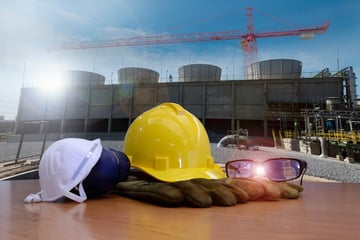 Temporary Power Distribution is an essential but potentially dangerous aspect of temporary lighting. As of 2014, the Occupational Safety & Health Administration (OSHA) implemented an updated rule that according to Dr. David Michaels, Assistant Secretary of Labor for Occupational Safety and Health, is long overdue. He states that this new standard “will save nearly 20 lives and prevent 118 serious injuries annually. Electric utilities, electrical contractors, and labor organizations have long championed these much needed measure to better protect the men and women who work on or near electrical power lines.”
Temporary Power Distribution is an essential but potentially dangerous aspect of temporary lighting. As of 2014, the Occupational Safety & Health Administration (OSHA) implemented an updated rule that according to Dr. David Michaels, Assistant Secretary of Labor for Occupational Safety and Health, is long overdue. He states that this new standard “will save nearly 20 lives and prevent 118 serious injuries annually. Electric utilities, electrical contractors, and labor organizations have long championed these much needed measure to better protect the men and women who work on or near electrical power lines.”
OSHA also states that the construction standard for electric power line work is designed to be more consistent with the corresponding general industry standard.
OSHA provides an extensive and thorough library of standards for power distribution. Here are a few of the basics:
Examination
OSHA requires that “electrical equipment shall be free from recognized hazards that are likely to cause death or serious physical harm to employees. Stating that all considerations of equipment safety should be determined by the following:
- Suitability for installation and use in conformity
- Mechanical strength and durability
- Electrical insulation
- Effects of heating under use conditions
- Effects of Arcing
- Size, type, voltage, capacity, etc., classification
- Other contributing safety factors to whoever is using or may come in contact with the equipment
Use of Trained Electricians
It is important for the safety of employees that a professional electrician sets up the temporary power distribution.
These professionals are well aware of the various regulations and are trained to install proper, safe, and compliant electrical solutions.
Guarding of Live Parts
According to OSHA, any live electrical equipment operating at 50 or more volts is required to be guarded against any and all accidental contact. This guard must be an approved cabinet or other form of approved enclosure.
Identification of Conductors
A distribution panel board must have each conductor’s use identified and made distinguishable through color-coding.
The National Electrical Code, Section 210-5, requires specific color-coding that enables employees to identify and tell them apart from one another.
Flexible Cords and Cables
According to OSHA, the “standard for safe use of flexible cords is one of the most frequently violated electrical standards, particularly in smaller plants. There is a definite need and place for cords, but there is also a temptation to misuse them because they seem to offer a quick and easy way to carry electricity where it is needed.”
Basically stating, flexible cords are more susceptible for misuse than typical fixed wiring.
Although flexible cords and cables seem to be the most sensible for temporary power distribution, flexible cords and cables may not be used as a substitute for fixed wiring, where they are being run through holes in walls, ceilings, or floors, where they are being run through doorways and other like openings, where they are attached to building surfaces, or where they are being concealed behind building floors, ceilings, or walls.
From equipment examination to implementation and management, these are just a few of the many guidelines and regulations set on power distribution. It is important to have consultation from a trained professional before implementing any temporary power distribution to ensure the safety of employees.
Tag(s):
Workplace Safety
More from the blog
View All Posts
Workplace Safety
2 min read
| July 20, 2016
Top Necessities For Proper Construction Site Power Distribution
Read More
Jobsite Lighting
4 min read
| July 27, 2016
Plan Temp Power and Lighting for a High Rise Construction Project
Read More
Workplace Safety
3 min read
| January 19, 2017
Temporary Electrical Power- Keeping it Safe and Time Effective!
Read MoreSubscribe to blog updates
Stay up-to-date on what's happening at this blog and get additional content about the benefits of subscribing.
